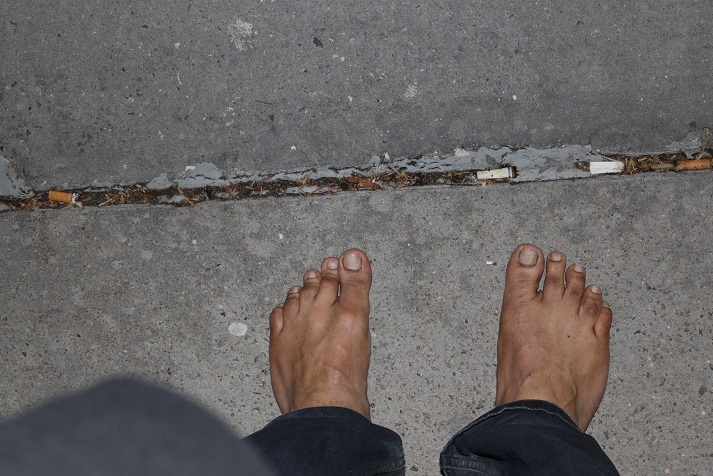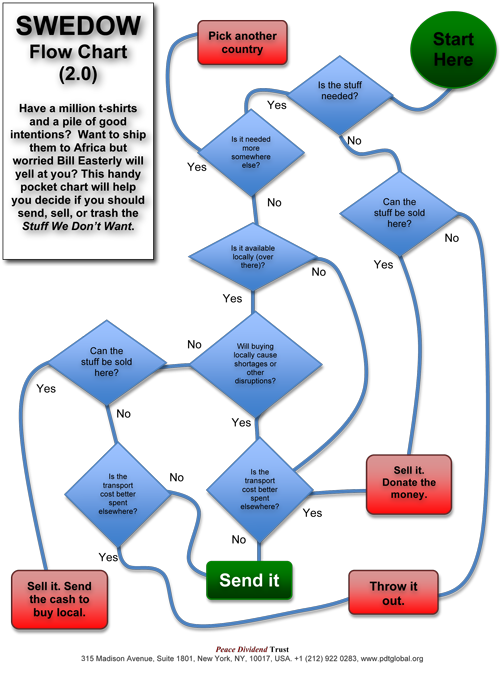Barefoot on Broadway (Warning: gross feet pics)
Vivek Nemana is an NYU graduate student and a student worker at DRI. I’ve been working at DRI long enough to recognize bad aid, and yet my skin still tingles when I watch the TOMS Shoes’ One Day without Shoes video. I know, I KNOW…but I just can’t help being swept away by montages of beautiful young people “taking action” set to a backdrop of a dramatic Matisyahu song. So I bared my feet for the cause:
Sure, this whole event really just helps TOMS sell more shoes, and sure, it was cold and raining in New York, and sure, I solicited bewildered stares, watched mothers shield their daughters from me, and possibly contracted hepatitis, but wasn’t I raising awareness about the real, complex challenges facing developing countries? Because wouldn’t African people hate to be shoeless on a rainy day in the Village, too? Also, do you think I could be a foot model?
TOMS, a for-profit shoe company, likes to use highfalutin’ NGO buzzwords like “accountability,” “awareness” and “change” in its marketing. It just published its first “giving report.” Which is fantastic…except that the campaign reinforces the stereotype that Africans are so pathetically destitute that they need anything we can give them, while allowing us to ignore both the condescending implication that the only hope for the poor is our charity, and the negative impacts of gifts-in-kind on local economies.
I also attended a One Day Without Shoes event held by the TOMS Shoes club at NYU. When I prodded my fellow students a bit about why they supported TOMS, the main message I came away with (and here please note my sample size n=2) was that people should buy the shoes because, with little time and disposable income to spare, it’s an easy way to be charitable with the things we do already.
In a way the attitude itself makes sense – it’s a fundamental economic principle -- but it manifests itself in a giving model (and this goes for BOGO and gifts-in-kind in general) that runs backwards. Instead of taking a fundamental problem that people face – say, unsafe conditions for children – and thinking of what they need to help solve it, this model takes a solution – shoes – and staples it to some problem that people have. And by attempting to view the whole spectrum of issues through this single-dimensional proto-solution, it’s easy to forget about all the unintended consequences.
It’s obvious that the TOMS aid-vertising works, that it can successfully generate a huge grassroots-style movement of well-intentioned people by not only playing into their sense of justice but also providing them with a way to “do something.” But, as I ended my own half-hearted participation in One Day Without Shoes, I remained unconvinced that easy aid could ever be good aid.
What I am certain of, however, is that nobody should EVER have to walk around barefoot in Greenwich Village.
 From Aid to Equality
From Aid to Equality






